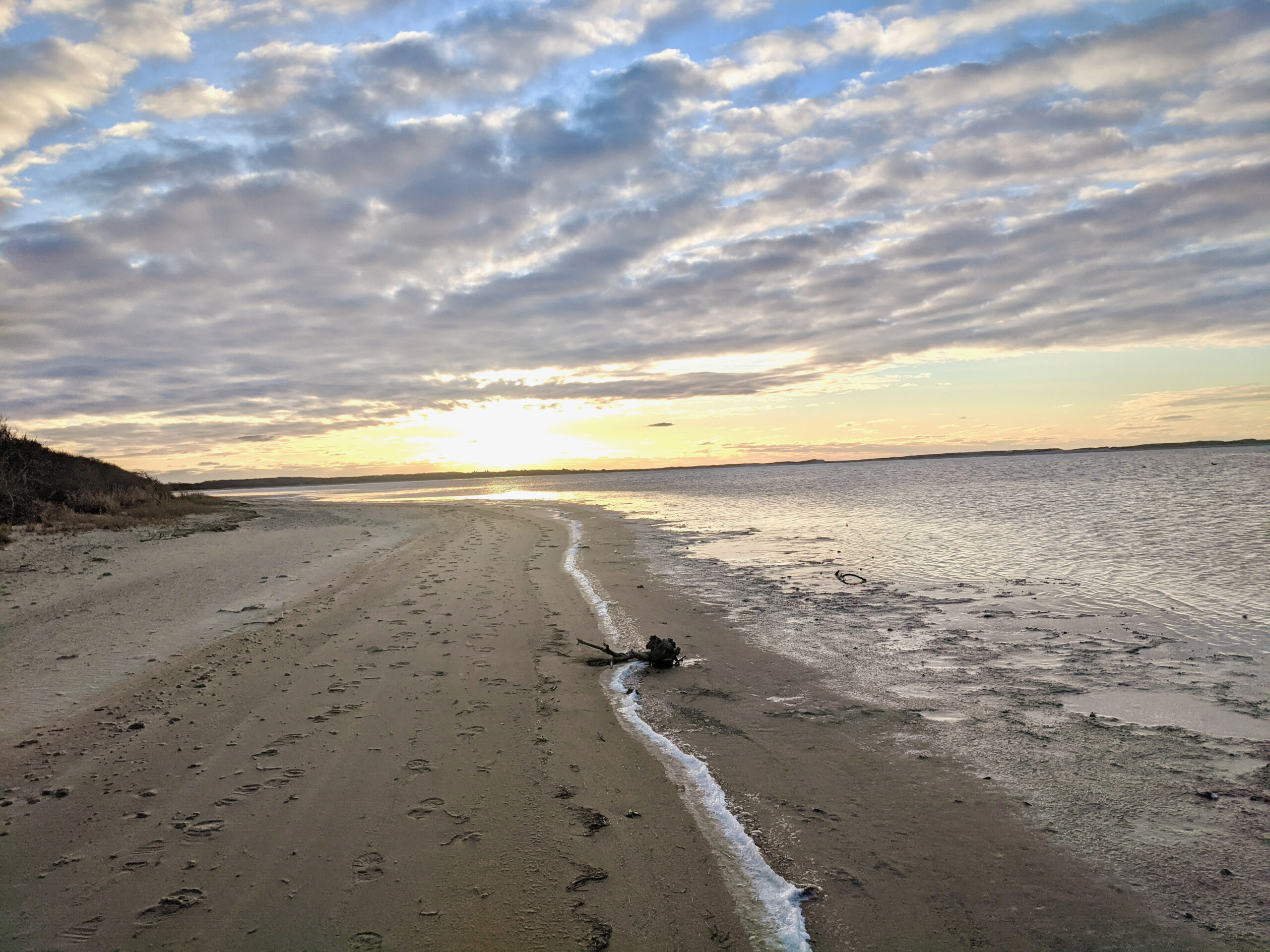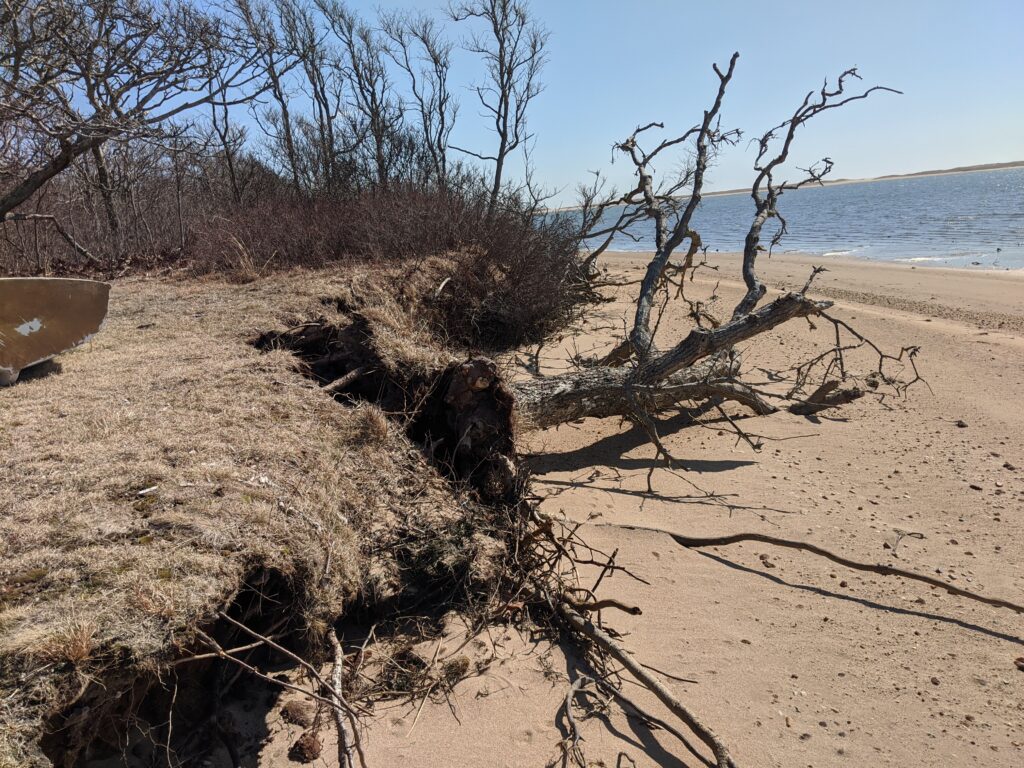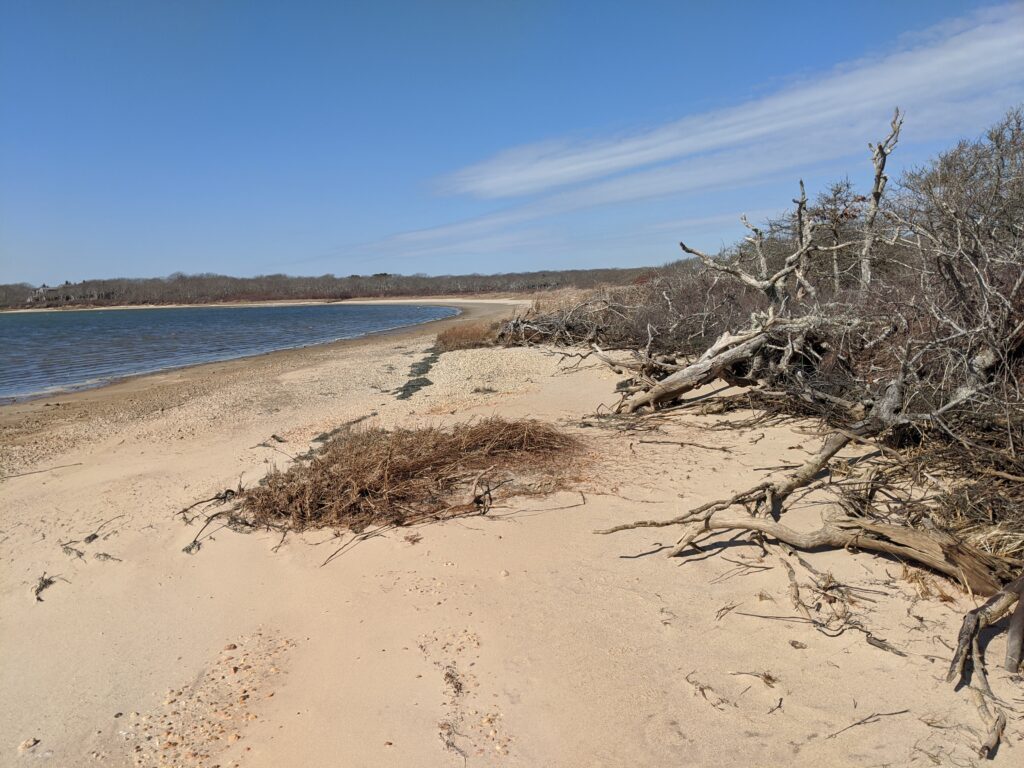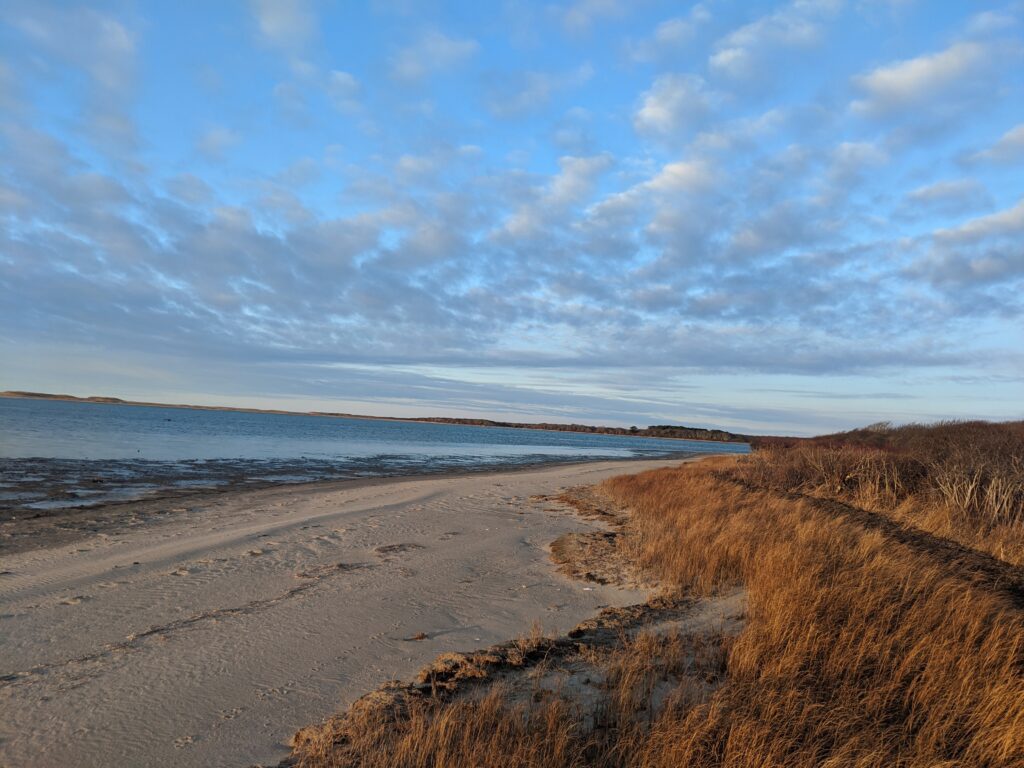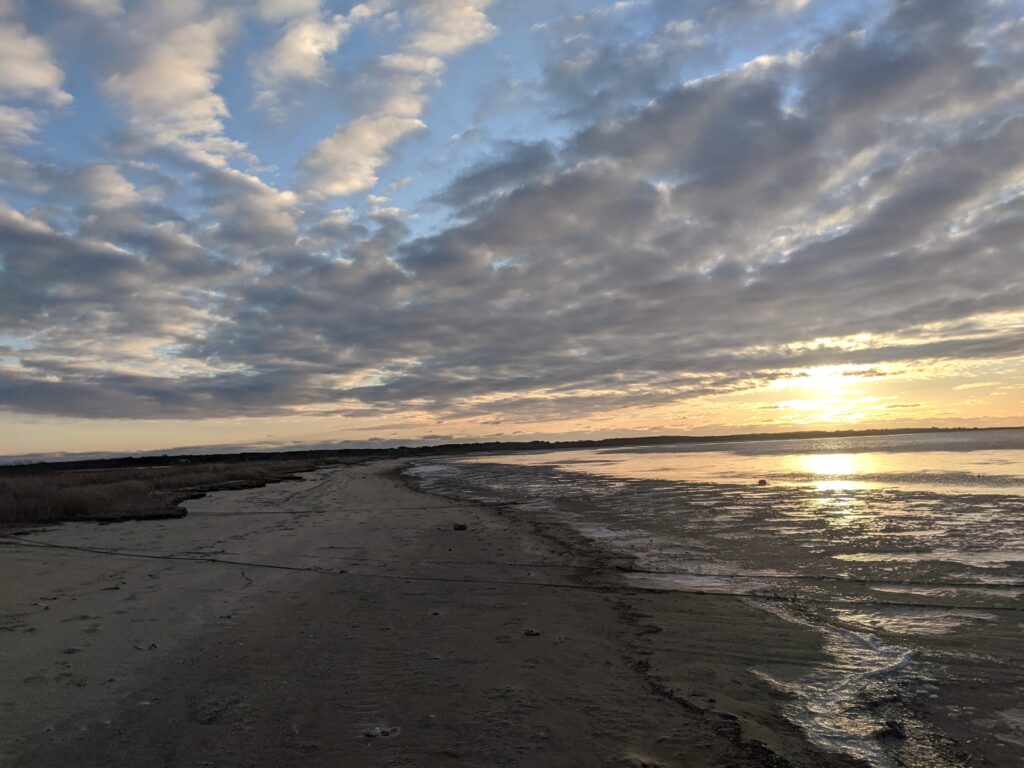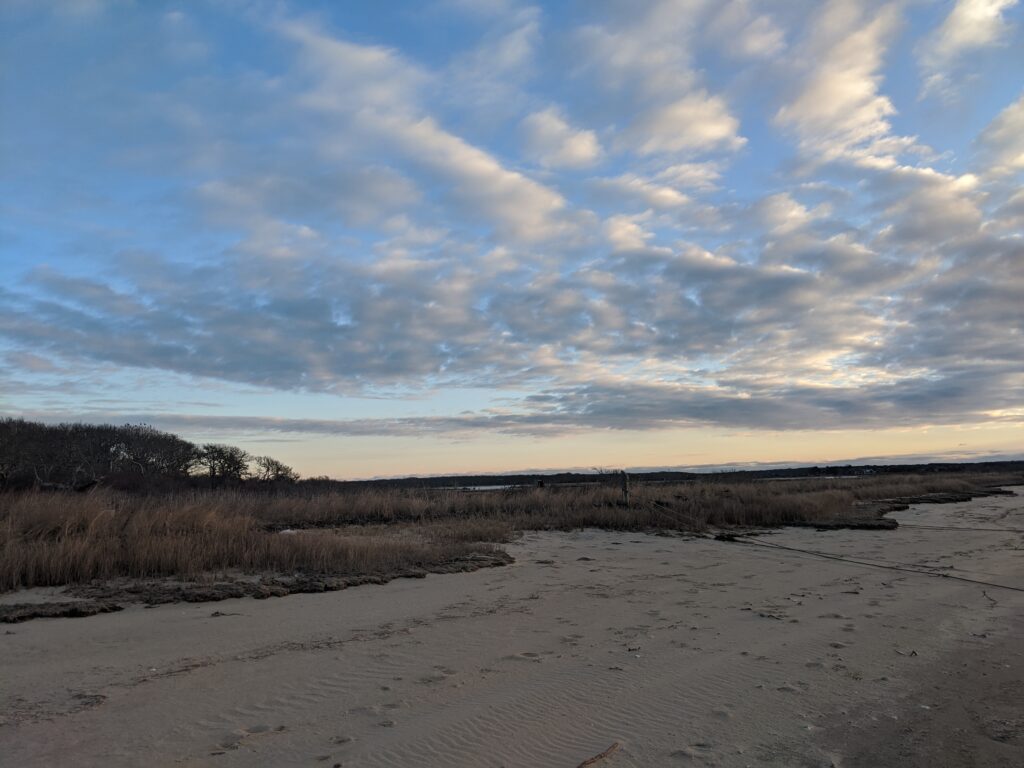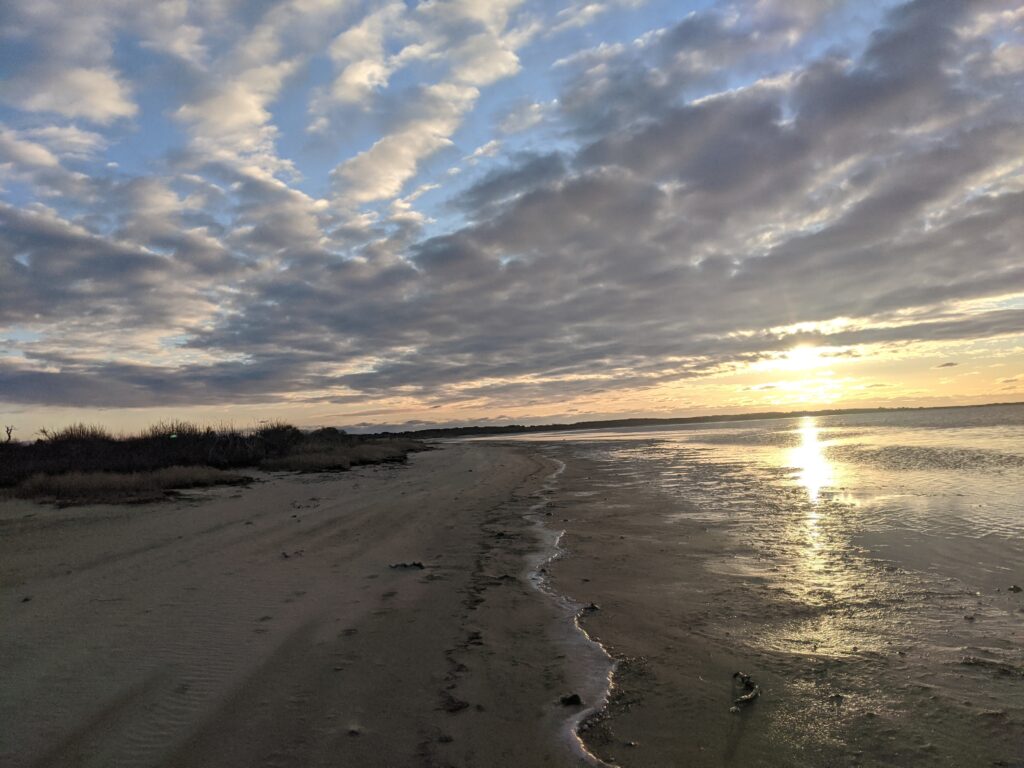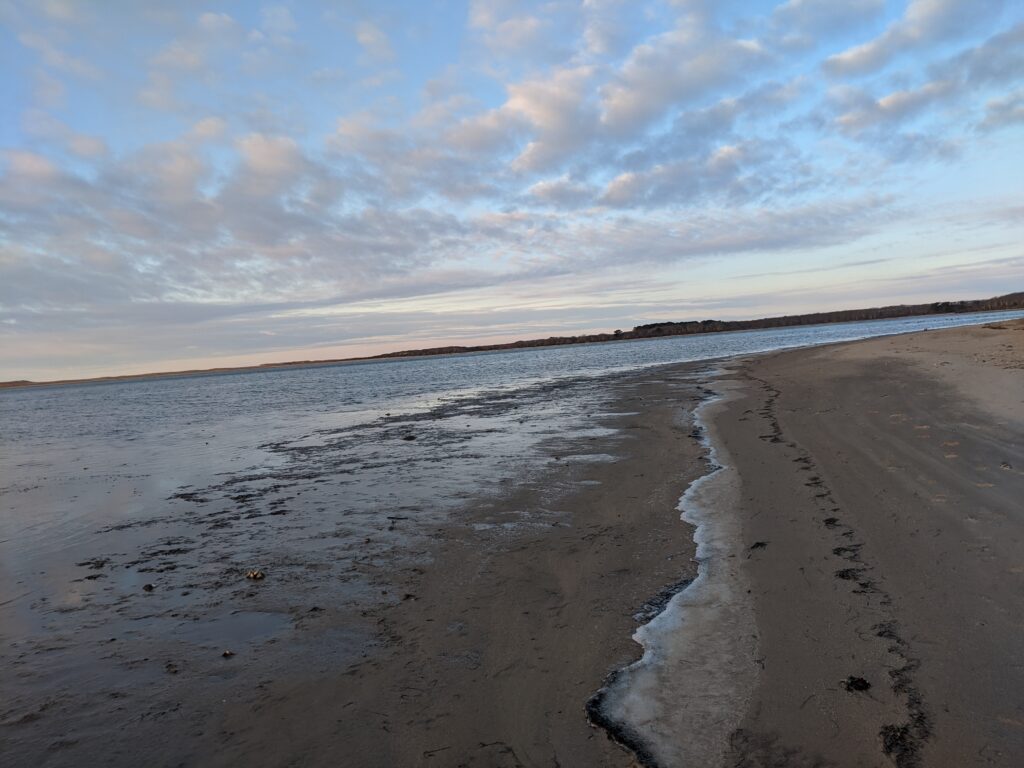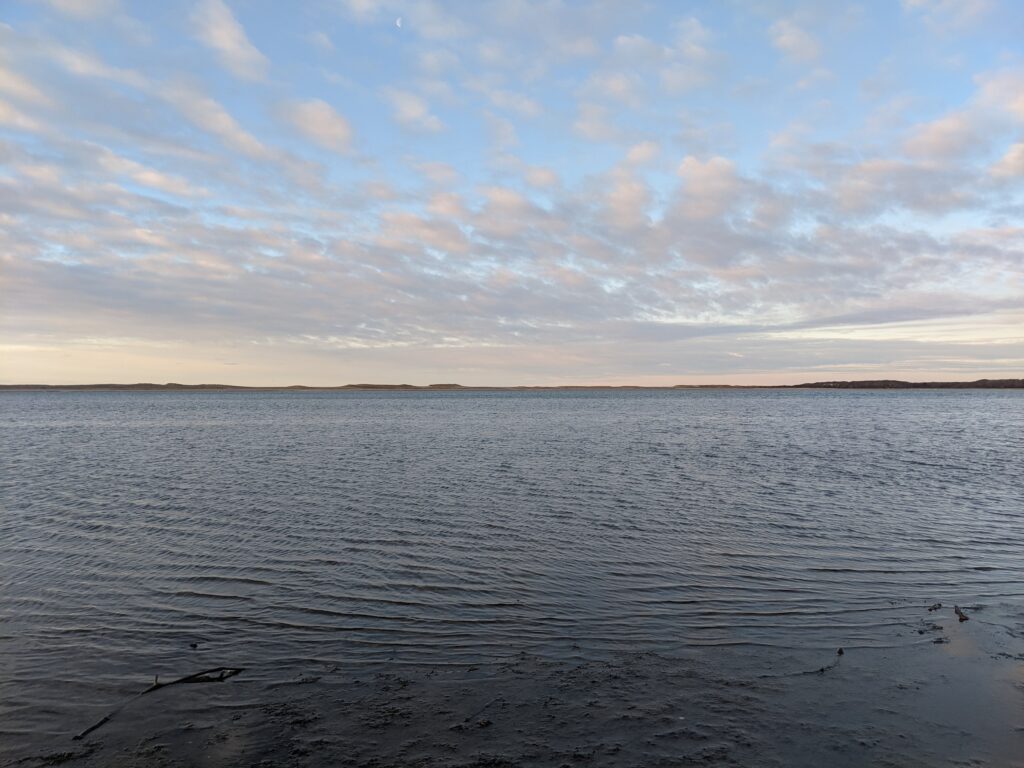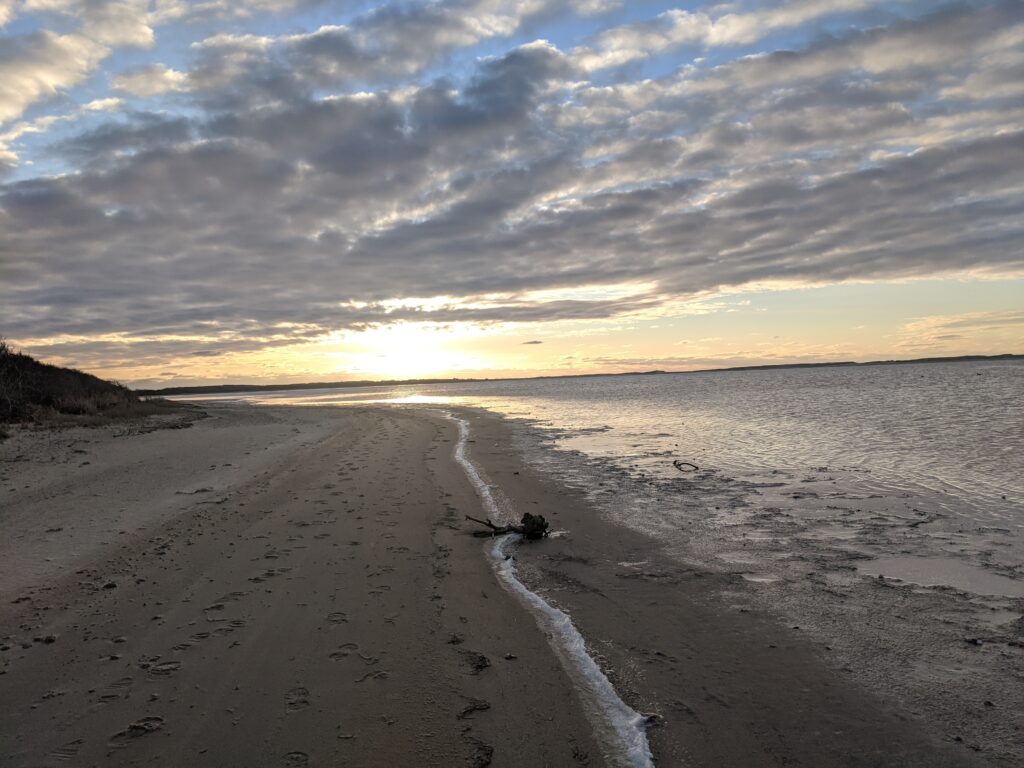The Pond Is Open & Tidal:
Following a breach of the barrier beach on Sunday February 28th, Edgartown Great Pond (EGP) remains open, tidal, and connected to the Atlantic Ocean. There are 2 phases to an opening: 1) Drainage and 2) Tidal Exchange. Prior to the cut, EGP was ~4 feet above sea level and after draining for almost a day, it became tidal, before draining a second time and then becoming tidal again.

EGP is a living ecosystem that depends on regular and effective seawater flushes for its survival. When the pond is open to the ocean, cool, clean, and salty seawater infuses EGP with salt, exchanges organisms between ocean and estuary, and reduces the nutrient load of the system.
Regular exchanges of water between the ocean and the Great Pond keep it healthy and teeming with life. Dredging of the sand that builds up in the pond north of the barrier beach increases the circulation and flushing capacity of each opening. The Great Pond is breached or cut open to the Atlantic Ocean 3-4x per year when an excavator creates a channel through the barrier beach that allows the exchange of water between pond and ocean. Without dredging, to remove the delta of sand in the pond north of the breach, the seawater does not reach all regions of the pond during a cut.
With regular dredging, pond openings allow seawater from the Atlantic Ocean to reach all corners and coves of the Pond. In ideal conditions (good tidal flow, post-dredging) EGP needs to be open a minimum of 9-11 days to flush all regions of the Pond and maximize salinity. In order to preserve the eelgrass ecosystem that has been established in the Pond, the salinity should not drop below 15 parts per thousand (ppt; per EPA eelgrass scientist Phil Colarusso; see report pg. 14-15). Ideally the salinity would stay above 20 ppt, but that has not been possible for EGP where the cut is a short-term event and therefore only intermittently tidal. Other Edgartown Ponds that have consistent tidal exchange are dredged to maintain good tidal flow and circulation.

